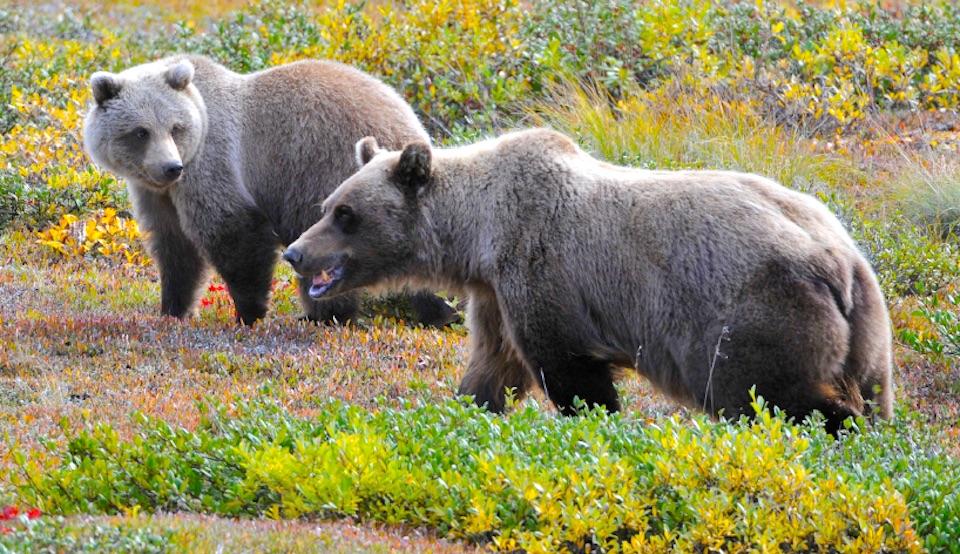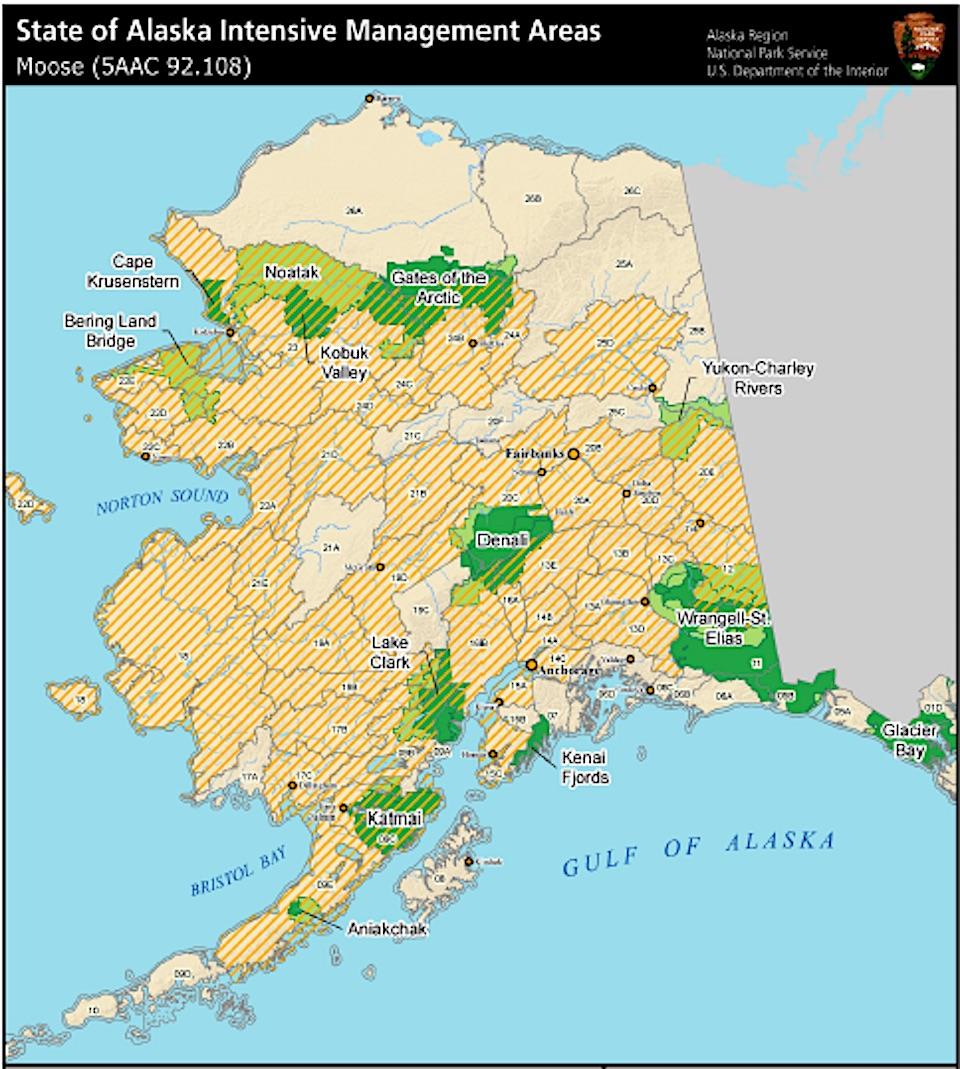
Brown bears in Denali National Park/J.W. Schoen
Alaska is a big, big place. At nearly 670,000 square miles -- you could fit Texas, California, and Montana into its borders -- there is barely one person per square mile. Yet state officials have identified more than 90 percent of Alaska as needing to be intensively managed for predator reductions so residents will be able to find game to kill for their pots.
Under that approach to ecosystem management, the state's focus on hunting has been in recent years to wipe out predators so ungulate populations will flourish and give residents, and even non-resident hunters, something to aim for.
Recently departed Interior Secretary Ryan Zinke tried to support that move by telling the National Park Service to relax its regulations regarding hunting of predators in national preserves in Alaska and by ordering the Park Service and U.S. Fish and Wildlife Service to let states manage fish and game in their lands.
But in a paper that appeared last week in PLOS Biology, William J. RippleI, Sterling D. Miller, John W. Schoen, and Sanford P. Rabinowitch argued that the state's approach to predator control is not based on science and "can trigger a chain of events that can create a downward spiral toward ecosystem simplification."
"Furthermore, in Alaska and other states, the U.S. Department of the Interior needs to meet its legal mandate to manage for natural and healthy ecosystems in ways that are in the national interest. In Alaska, this will require not aligning hunting and trapping regulations on National Park Preserves and National Wildlife Refuges with state regulations that are designed to reduce naturally occurring densities of large carnivores," they wrote.
"The state of Alaska also should be candid with the public about the absence of science supporting the efficacy of predator control programs to achieve established objectives with regard to ungulate harvests instead of making unsupported claims of “success” for wolf reduction efforts in publicly distributed booklets about Intensive Management. For bears, there are not even any claimed successes for increased harvests of adult moose or caribou resulting from increased bear harvests."

Alaska's Intensive Management areas put a premium on killing predators so there can be more moose and caribou/NPS

 Support Essential Coverage of Essential Places
Support Essential Coverage of Essential Places







Comments
We have to many parks n restrictions on predators for a state this big hunters will not even make a scratch the surface
We are harvesting very little predators it should be open year round
See how this plays out
Well, Nikita, it would be nice if what you hope is true is the way things are. Some people in Alaska aggressively kill predators, not as hunters but to kill predators. An entire pack of wolves on the boundary of Denali National Park was destroyed by strategic kills.
Similarly, these rules would permit a person to go into a wolf den and kill the mother and kill the wolf pups. A person can enter a bear den and kill the mother and kill the cubs. This is not sport hunting.
And in a National Park Preserve, you cannot just wait and see how this plays out. The law for the Alaska National Parks of 1980 is clear that wolves and bear are to be protected and populations of predators and prey are never to be manipulated. National Park Preserves are to be managed exactly like national parks except that sport hunting is allowed. Sport hunting as part of wildlife ecosystem dynamics, never manipulated at whim to increase or decrease a population of any animal of the park and the preserve.
Congress had good reason for these laws. The conservation lands established by Congress in 1980 were there fourth part of land distribution by Congress. After the petroleum reserve in NW, Congress set up a system for the State to get title to 100 million acres, including title to the Prudhoe Bay oil reserves. Then the Alaska Native Claims Settlement Act Congress distributed 44 million acres to Native Corporations as part of a deal to build a pipeline corridor to Prudhoe Bay to transport the equipment and the oil. A key part of the balance to the Statehood act and Native Claims was the provision in the Native Claims Settlement Act to set up the process to create National Park, Wildlife Refuge, National Forest and Wild and Scenic Rivers. On federal and state and native and military land there are different resources and different management needs. For the federal lands designated for conservation, national wildlife refuges were established to protect resources best managed under the Refuge Administration Act. Wildlife refuges and national forests permit different uses not allowed in national parks. And Congress determined that sport hunting under national park policies would be appropriate for national park preserves. For some national park, national forest or wildlife refuges, additional Wilderness protection. On most of the lands subsistence hunting and fishing would be allowed to continue for local rural residents, managed to be consistent with the laws of each conservation system. Native Corporations worked hard to help create national parks and wilderness areas to make sure the lands adjacent to Native Corporation lands would not be overused.
The point is different resource areas were set aside to be managed differently based on the resources. National parks and national park preserves were to be managed to maintain natural ecosystems.
Now the State of Alaska Game Board is proposing that across a wide sweep of Alaska, cutting right across entirely different State, Native, Forest, Refuge, or National park Preserve land would have the same Game Management rules. The same. State elected leaders lobbied the Department of the Interior to eliminate Wildlife Refuge and National Park regulations that would make sure that Refuges and Preserve were managed in the special way Congress intended.
No manipulation of wildlife populations in national park preserves is ever appropriate.
The state has millions of acres of its own lands, as well as BLM land and National Forest land, to impose "intensive management" on. it does not need to undermine the balanced plans that brought 100 million acres of land to the State, 44 million acres of land to its Native citizens, by attempting to unravel national park preserves.